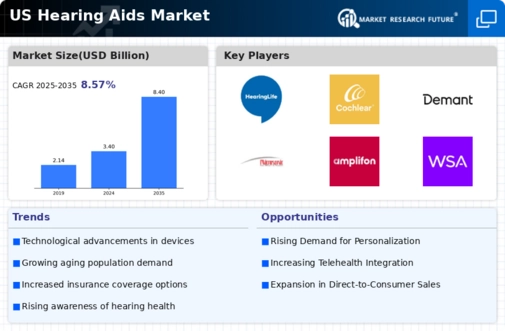The US Hearing Aids Market is characterized by a fierce competitive landscape, driven by advancements in technology, increasing awareness of hearing loss, and a growing aging population. Companies operating in this market strive to differentiate their products through innovation, customization, and superior service offerings. This competition is further intensified by the entry of new players and the expansion of existing firms into new geographical regions. Factors such as product efficacy, brand reputation, accessibility, and pricing strategies significantly influence consumer choices in this sector.
The market also experiences dynamic shifts due to regulatory changes and the evolving needs of consumers seeking more seamless and less obtrusive hearing solutions. Hearing Life has established a robust presence in the US Hearing Aids Market, characterized by its commitment to providing accessible hearing solutions that cater to a diverse patient demographic. The company focuses on offering a wide range of hearing aids, from basic to advanced technology, ensuring that individuals at various price points can access quality hearing assistance.
One of the strengths of Hearing Life lies in its customer-centric approach, which emphasizes personalized care and ongoing support, enhancing patient satisfaction and loyalty. The company's strategic partnerships with hearing care professionals and local clinics allow for a widespread network, ensuring that its services and products are available to a large audience across the nation. Cochlear Limited has made significant inroads into the US Hearing Aids Market, particularly known for its innovation and specialization in implantable hearing solutions. Key products offered by Cochlear Limited include advanced cochlear implants, which are designed for those with severe to profound hearing loss.
The company's strengths lie in its reputation for high-quality products backed by extensive research and development, as well as its commitment to improving the quality of life for individuals with hearing challenges. Cochlear Limited has been active in expanding its market presence through strategic mergers and acquisitions, enhancing its product portfolio and distribution capabilities in the US. This proactive approach not only reinforces its competitive edge but also facilitates the introduction of cutting-edge technologies to meet the evolving demands of consumers in the hearing aids market.
























Leave a Comment